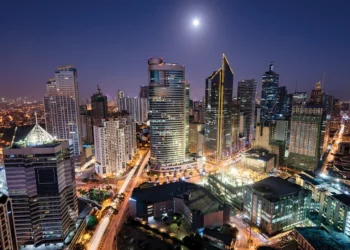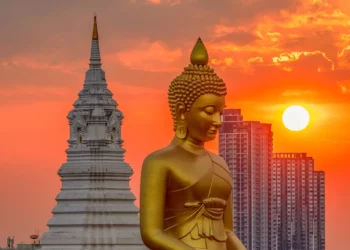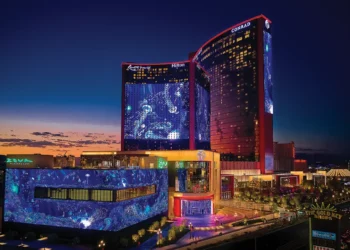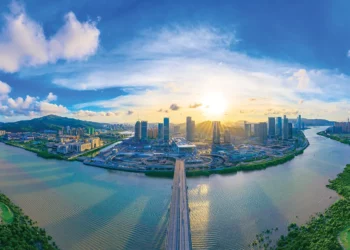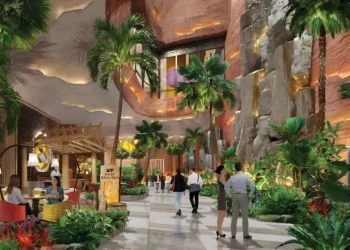The Tokyo gubernatorial election may well have decided the city’s IR fate, yet history suggests Japan’s capital city has long wanted a casino of its own.
Tokyo is attracting attention. At the time of writing, the most populous urban conglomeration in the world with 38 million people was preparing for the Tokyo gubernatorial election on 5 July. Why all the attention? For the global gaming industry, the billion-dollar question remains whether or not Tokyo will throw its hat in the ring to develop an IR.
The candidates for Tokyo governor offered a range of views and pledges on that IR bid. Historically, Tokyo has always been up in the air regarding a possible bid, swaying with whoever the governor happens to be at the time, but now that governor Yuriko Koike has been elected to serve another term, what does this mean for Japan’s burgeoning casino industry?
TOKYO’S IR HISTORY
Tokyo’s relationship with casinos has a long history and there is no doubt the sprawling metropolis has been toying with the idea longer than any other city in Japan.

Let’s go back about 20 years, to April 1999, when Shintaro Ishihara was running for governor. Ishihara pledged to make a Tokyo casino a reality, and he was elected on that mandate among others. He held the post of Governor of Tokyo for 12 years and six months until 2011. Ishihara’s stance was, “Building a casino in the coastal Daiba area of Minato ward would create 10,000 jobs.”
He stated (inaccurately), “Tokyo is the only major city in the world with a population of over a million without a casino,” and that, “Structural reform will help us establish a more transient workforce.”
His Odaiba Casino Concept attracted plenty of interest but, as it constituted a form of large-scale public gambling, casino development required national legislation and Governor Ishihara switched his stance to bringing that legislation to the national government. In 2003, he announced that the Odaiba Casino Concept would be abandoned.
Things went quiet for the next nine years until 2012, when Ishihara’s time in office ended and Naoki Inose took over. In June 2013, Governor Inose announced he would “Aim to establish an integrated resort including casino (IR) in the Tokyo Waterfront City district.” Many thought he would proceed with an IR bid in Tokyo, but instead he resigned six months later due to financial woes.
It was Yoichi Masuzoe who took over the position of governor in February 2014. Masuzoe emphasized his neutral stance on IRs, stating, “There is a possibility of a bid with national legislation, investigation, discussion and acceptance within Tokyo.”
The Tokyo Metropolitan Government has been conducting regular research on IRs since then and seemingly has been steadily preparing for an IR bid. In June 2014, after publishing the Report on Contracted Research Services Regarding IR, the government published another report in 2015 and 2016 which analyzed IR properties outside of Japan. However, in June 2016 Masuzoe was also forced to resign due to political funding issues.

The current governor, Yuriko Koike, was first elected in August 2016. Governor Koike has never wavered from her position of “comprehensively weighing the advantages and disadvantages” of an IR bid. Even during her recent re-election campaign, she did not make it clear whether she is for or against a bid. Unlike the other candidates this time around, she opted not to express her stance on the matter to gain the confidence of voters. It even looks like she is completely avoiding offering up an IR bid on the political chopping board.
But, that doesn’t mean Tokyo has been idle on the subject on her watch. During Koike’s administration, the IR Promotion Act was enacted in December 2016, and during 2017 and 2018 the Overseas IR Research and Analysis initiated by Masuzoe continued. Then, of course, the IR Development Act was passed in July 2018. In the same month, the Tokyo Metropolitan Government announced its Tokyo Bay Area Vision draft.
The Tokyo Bay Area Vision consists of three basic concepts:
- Present the Tokyo Bay Area to the world as a place where Japan’s future growth will be generated.
- Use a bird’s eye view of the Tokyo Bay Area to take advantage of the unique characteristics of each area.
- Take advantage of the perspectives and free thoughts of young people, who will be leading the next generation, through cooperation between public and private sectors.
The aim is to present the area to the world as a vision of the future that will serve as a model for the next generation of urban development, and then use this in the growth strategy of Tokyo, and in turn, the rest of Japan as well. The topical areas are Daiba and the adjacent Aomi. Aomi is considered to be a potential IR location.
In June 2019, Tokyo incorporated the “Reliable Implementation of legislation required for an IR” in the “Tokyo request for proposals for national government policies and budgets,” for the seventh year running.
Furthermore, in September last year, Tokyo announced “Contracting of an impact survey regarding IR.” This time around, the research being conducted since 2014 was called, “Impact and Analysis if an IR were to be located in Tokyo,” distinguishing it from past surveys. It would be no exaggeration to say that this change alone is sufficient grounds to assume Tokyo is actively considering an IR bid.
 Incidentally, when Koike was a member of the House of Representatives prior to taking her position as governor, she belonged to the nonpartisan Alliance for the Promotion of International Tourism, dubbed the “IR Caucus.” According to her, however, “I was not a key member. I joined so I could get an idea of what they had in mind,” and she emphasized it had no effect on her decision regarding a bid.
Incidentally, when Koike was a member of the House of Representatives prior to taking her position as governor, she belonged to the nonpartisan Alliance for the Promotion of International Tourism, dubbed the “IR Caucus.” According to her, however, “I was not a key member. I joined so I could get an idea of what they had in mind,” and she emphasized it had no effect on her decision regarding a bid.
LIMITED TIME
Whether or not Tokyo will show intent to pursue an IR bid after the gubernatorial election depends on Koike, who still has the small matter of a postponed Olympic Games, now scheduled to start late July 2021, to deal with as well.
One thing that’s certain, however, is that if the national government’s application period, currently set for 4 January to 30 July 2021, doesn’t change, Tokyo will only have up to one year to play catch-up with the processes other regions have been establishing for years. It’s a particularly tight deadline.
On the other hand, so attractive is Tokyo as a potential IR location that there would surely be no shortage of large IR operators racing to join the queue. It could even be enough to lure back Las Vegas Sands, which abandoned its Yokohama bid in May because “the framework around the development of an IR has made our goals there unreachable.” Rest assured at least a few companies are already working behind the scenes.
For an investment set to exceed JPY1 trillion, it may well take a city the size of Tokyo to get the big guns firing.












